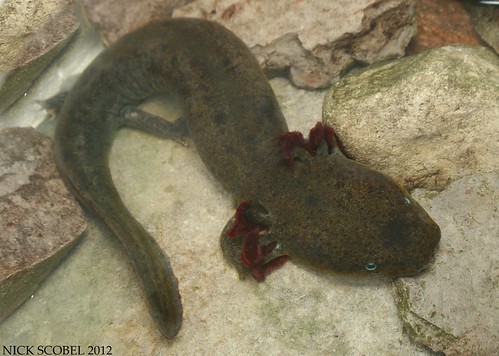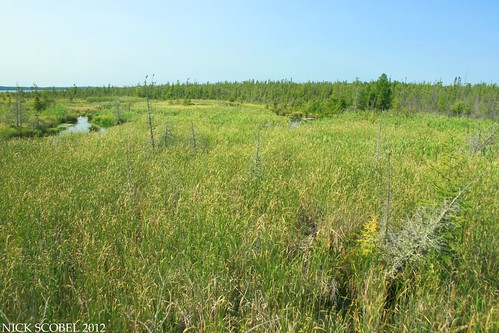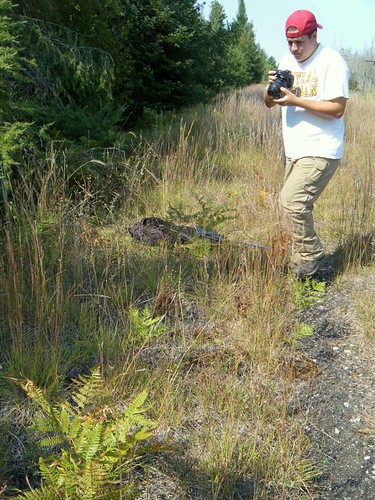Mudpuppy - Necturus maculosus maculosus
These large aquatic salamanders are the largest species of amphibian which inhabits the state, with adults ranging from 8-15 inches. Mudpuppies are neotenic, meaning that they retain larval characteristics through adulthood. In the case of this species, the external gills which most larval amphibians have are never lost as mudpuppies mature, making them a permanent resident of aquatic environments. They prefer cool, oxygen rich waters with plenty of rocks for them to hide underneath. In Michigan, mudpuppies inhabit clear creeks, rivers, and deep inland lakes. After an interesting photo session, we let the water dog go back into the lake. We poked around a few areas nearby and came up empty handed. After brainstorming a few idea, we decided to make a two hour trek further north in hopes of seeing our first northern Michigan massasauga.
This massive conifer swamp is home to a stable population of massasaugas and is just a short drive from the Mackinac Bridge. Conifer swamp is a groundwater-influenced, minerotrophic, forested wetland dominated by northern white-cedar (Thuja occidentalis)
that occurs on organic soils primarily north of the climatic tension
zone in the northern Lower Peninsula. Other common trees species may
include balsam fir (Abies balsamea), tamarack (Larix laricina), and black spruce (Picea mariana). After traversing the area for about an hour, we began to get a little discouraged. But just as we were about to leave, my eyes caught a glimpse of a familiar pattern.
This beautiful massasauga was laid out in the shade of a cedar tree, I couldn't help but shout, "Sauga!" to get Chris's attention. He quickly ran over to get a few in situ shots of the snake before a brief photo session.
Eastern Massasauga Rattlesnake - Sistrurus catenatus catenatus
Easily one of the nicest examples of this species I've ever seen, this snake was exceptionally marked and sported a beautiful tan coloration that I don't often see in the southern part of the state. After seeing massasaugas from both SE and SW Michigan, it has long been a goal of mind to find a photograph a rattlesnake in northern Michigan. The populations up north have not been studied nearly as much as those in the southern part of the state, and because the habitat in Michigan is much different, so is the ecology of northern massasauga populations. A recent study done by Bruce Kingsbury and his lab at IPFW examined the ecology of a few northern populations in order to help make better informed management decisions for land managers in northern Michigan. It was a great labor day weekend, hope you all enjoyed yours as well!







Agreed, what a beautiful snake.
ReplyDeleteNick, that sounds like a great trip. That sauga really is making me want to head up...what a beautiful snake! I am probably going to be herping next weekend...I'm hoping I can turn something up.
ReplyDeleteCome paddle for wood turtles!
ReplyDeleteGot a really nice post! good article , related to my search. I’m sure lots of people who search for something like this will look and appreciate this blog. keep it up:)
ReplyDeleteweb development michigan